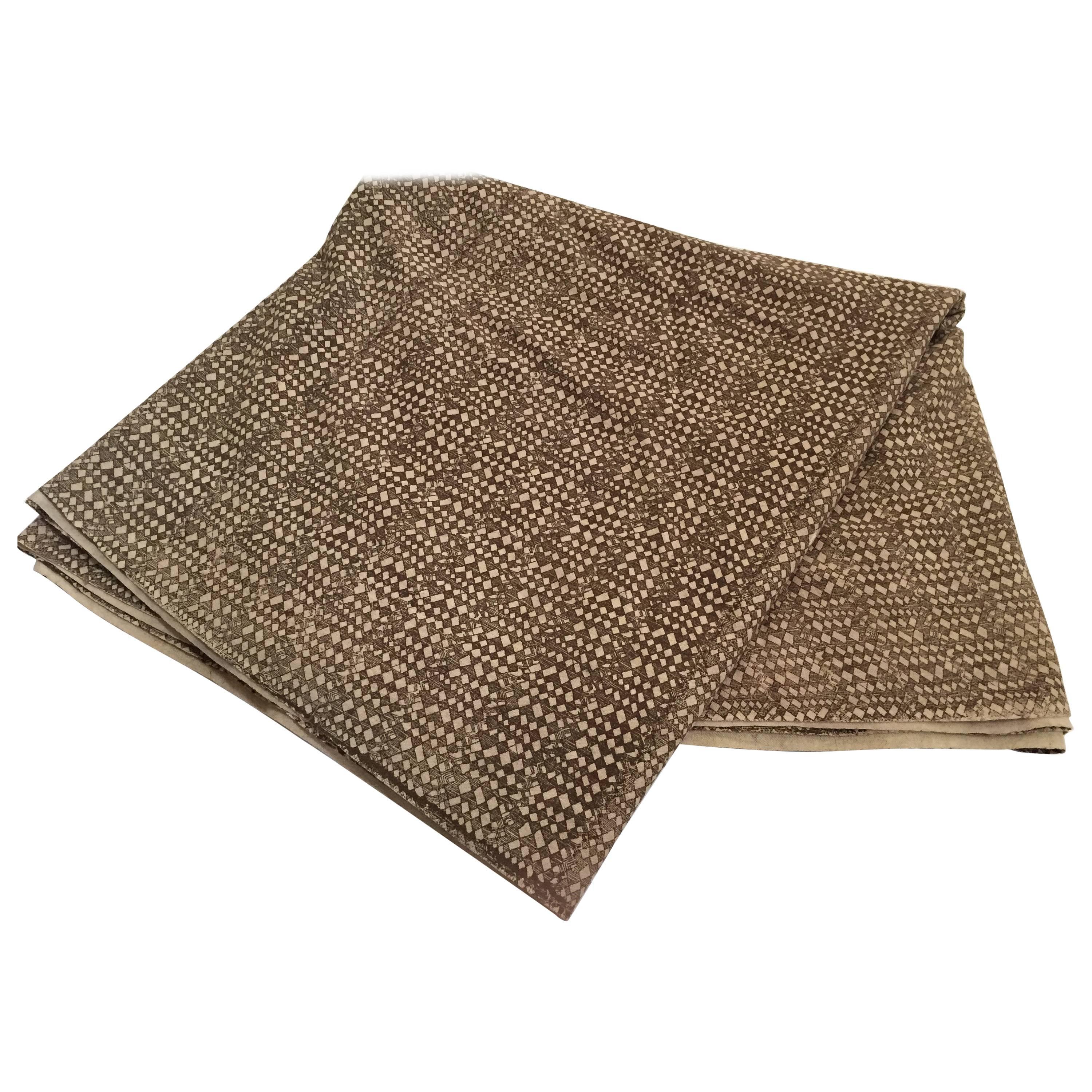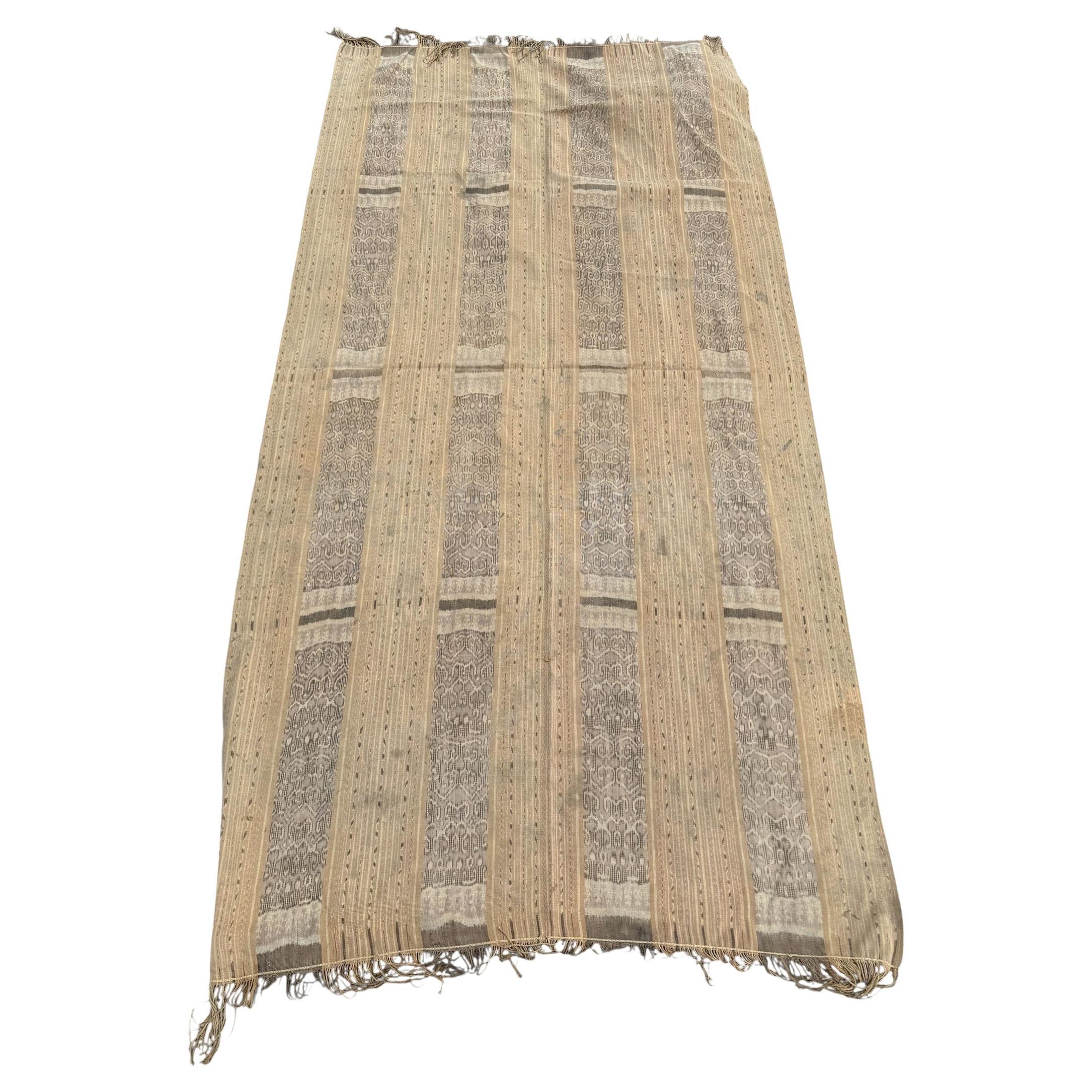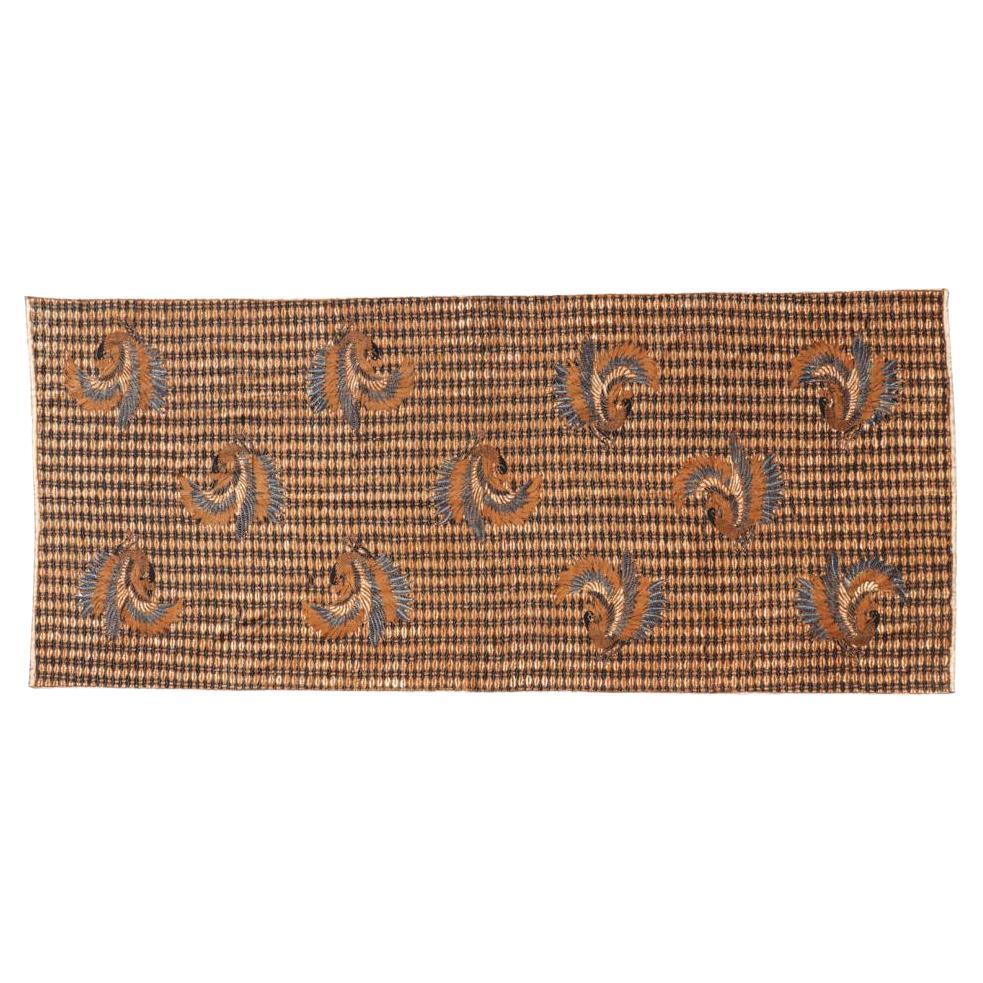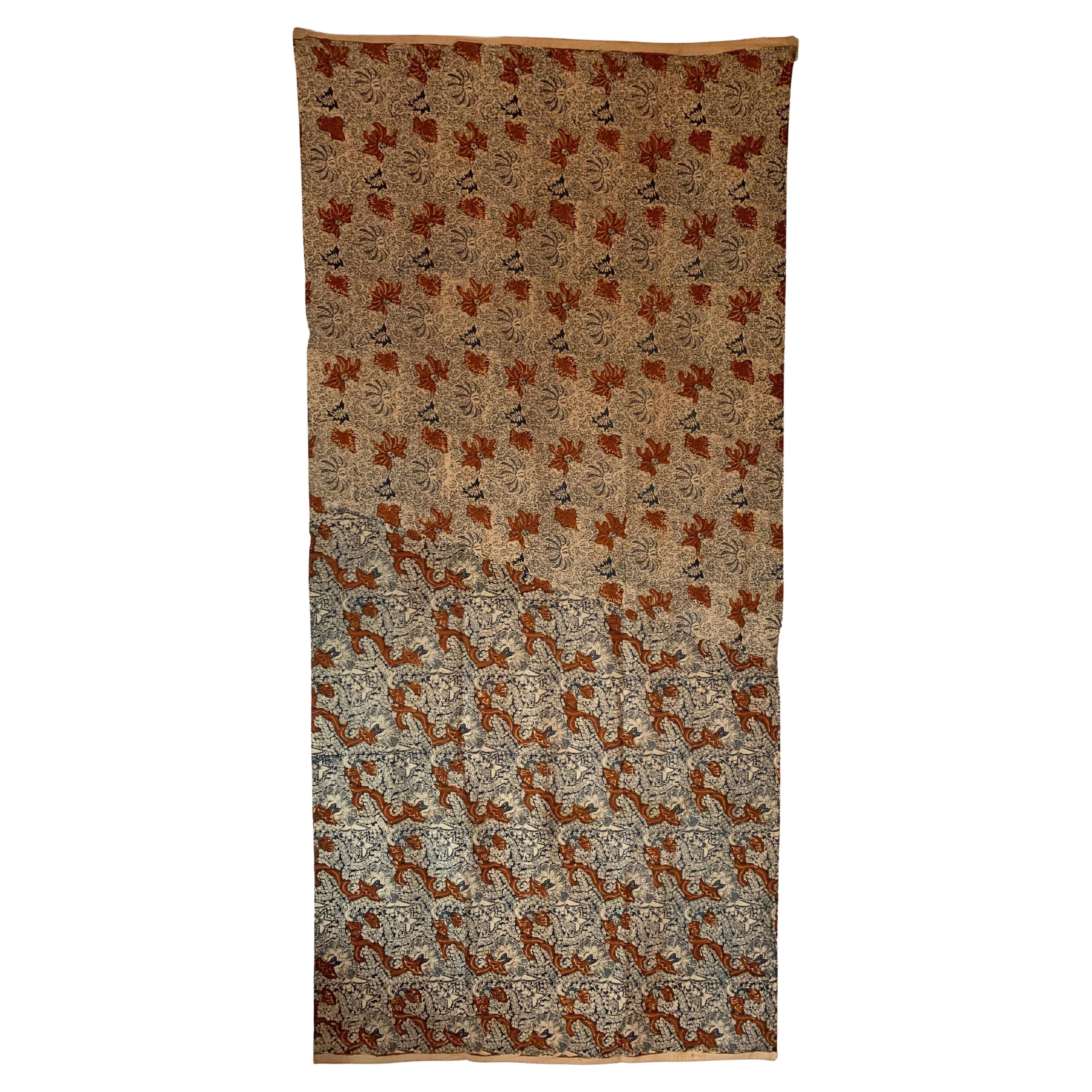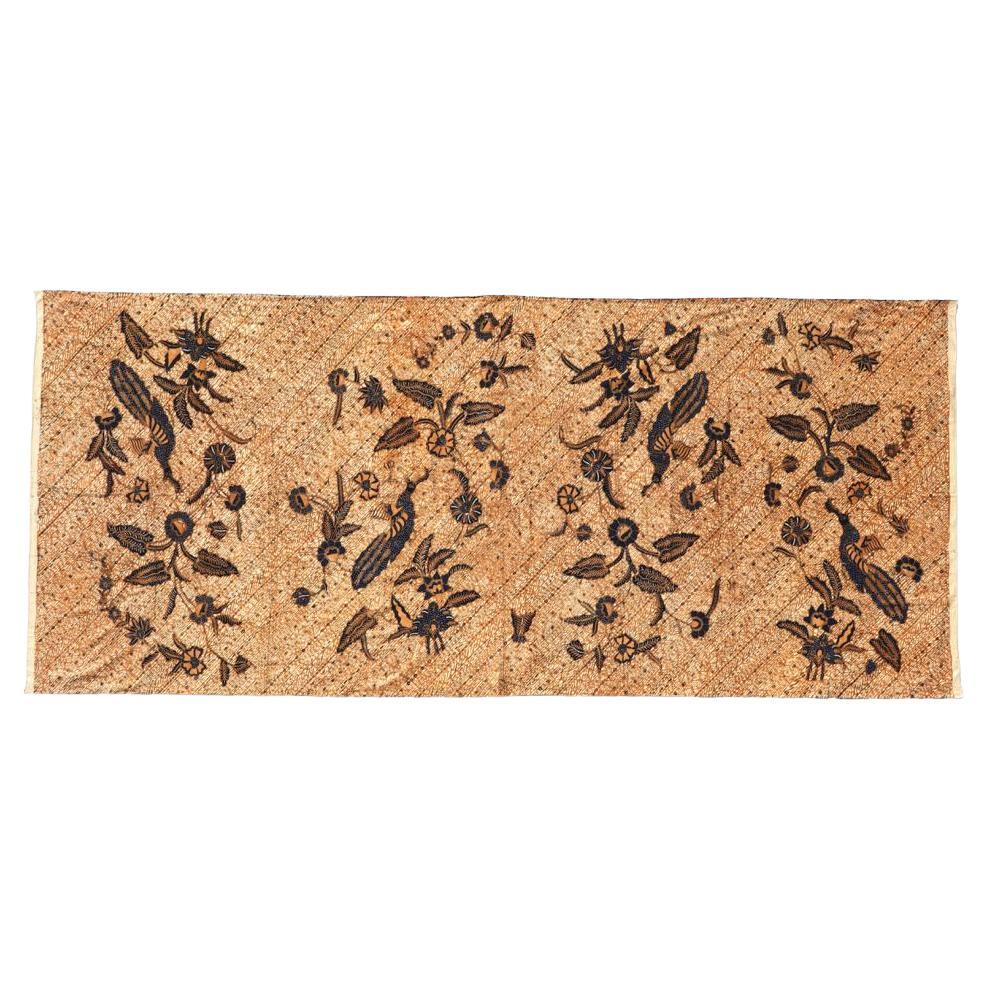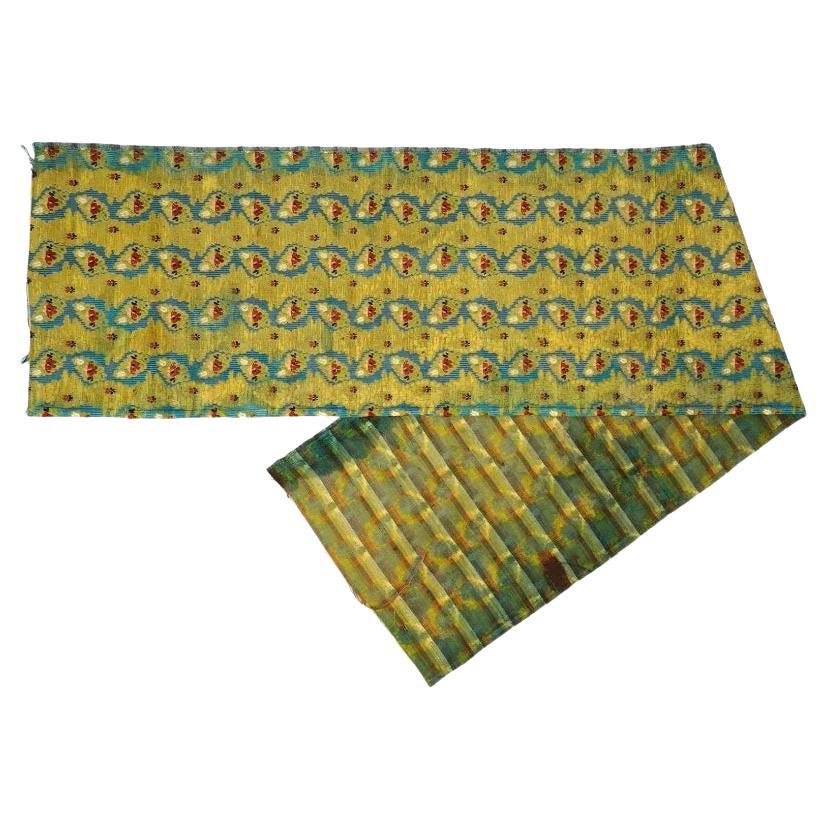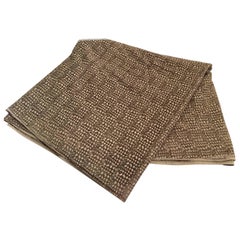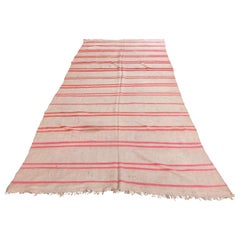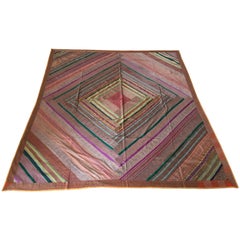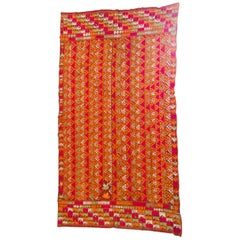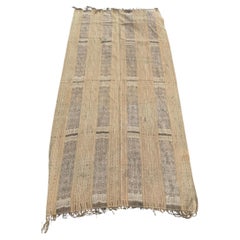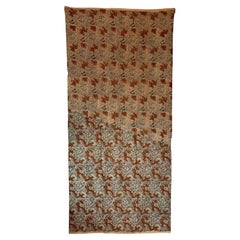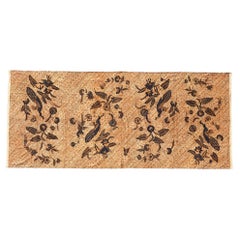Items Similar to African Batik Cloth Natural Hand-woven Hand-Printed Cotton Fabric Ghana 10 Yards
Video Loading
Want more images or videos?
Request additional images or videos from the seller
1 of 12
African Batik Cloth Natural Hand-woven Hand-Printed Cotton Fabric Ghana 10 Yards
$1,450
£1,100.23
€1,258.01
CA$2,025.26
A$2,251.81
CHF 1,175.77
MX$27,410.01
NOK 15,002.33
SEK 14,056.46
DKK 9,388.77
Shipping
Retrieving quote...The 1stDibs Promise:
Authenticity Guarantee,
Money-Back Guarantee,
24-Hour Cancellation
About the Item
African Batik Cloth Natural Hand-woven Hand-Printed Cotton Fabric Ghana 10 yards.
Colors are organic earth tone beige and light brown in geometric design.
Non waxed fabric circa 1950s.
Hand made in Ghana Africa.
Museum Quality Original Long Piece.
380 inches, (30 ft 10 yards Long) x 46 inches Inches Wide( 4ft).
Could be use to make pillows or upholstery.
History of Batik in Africa:
Batik, a traditional fabric art technique, has a rich history in Ghana, West Africa. The practice of batik involves using wax to create intricate patterns on fabric, which is then dyed to achieve the desired design. While batik has its origins in Asia, particularly in Indonesia, it has been embraced and adapted by various African countries, including Ghana.
In Ghana, batik-making can be traced back to the mid-20th century when it gained popularity as a form of traditional textile art. The craft was introduced by artists and artisans who were inspired by the vibrant and expressive nature of batik. These early practitioners experimented with different designs, colors, and patterns, infusing local themes and motifs into their creations.
Over time, batik became an important part of Ghanaian culture and identity. It is not only used for clothing but also for various decorative and functional items such as wall hangings, tablecloths, and accessories. The art form often reflects the rich cultural heritage of Ghana, incorporating symbols, proverbs, and traditional stories into the designs.
Ghanaian batik artists often employ a combination of traditional and contemporary elements, creating a unique fusion of styles. The process of making batik involves applying hot wax to the fabric using various tools to create the desired patterns. The wax acts as a resist, preventing dye from penetrating the waxed areas. After dyeing, the wax is removed, revealing the intricate designs on the fabric.
Today, batik-making in Ghana continues to thrive as both a traditional craft and a form of artistic expression. Many artisans and designers draw inspiration from Ghana's diverse cultural landscape, incorporating elements from different regions and ethnic groups into their batik creations. The art form has also gained international recognition, with Ghanaian batik products being sought after both locally and abroad.
In summary, the history of batik in Ghana is a testament to the creativity and adaptability of artists who have embraced and transformed this traditional technique into a vibrant and culturally significant art form within the country.
HISTORY OF BATIK
In the mid-nineteenth century, the Belanda Hitam, or "Black Dutchmen," are said to have introduced batik to West Africa after serving as indentured soldiers for the Dutch in Indonesia. Returning from their conscriptions with trunks of fine Javanese batik, the opulent patterns captured the imagination of their friends and relatives. However, textile history is complex, and only a handful of recruits returned to West Africa with batik due to delayed payments.
Batik, with roots traced to Egyptian mummies, is a tradition found globally, from Southeast Asia to Japan and India. Europeans, particularly the Dutch, played a significant role in industrializing batik from the seventeenth century onward.
In West Africa, Dutch Scholar Ineke van Kessel suggests that batik arrived from India over trans-Saharan routes. Local populations, like the Yoruba in Nigeria, incorporated wax printing into their textiles. European traders brought wax and non-wax fabrics to West Africa in the seventeenth century, targeting a population ready for their consumption. European designers adapted prints for the African market, tailoring designs to each region and port.
Today, batik, both handcrafted and in derivative roller prints, is widespread and cherished across West Africa. Patterns range from abstract geometry to figurative images, serving as a form of expression and communication for individuals, conveying marital status, mood, and even political and religious beliefs. While wax prints were initially produced in Europe until the 1960s.
- Dimensions:Height: 360 in (914.4 cm)Width: 45.5 in (115.57 cm)Depth: 0.05 in (1.27 mm)
- Style:Folk Art (In the Style Of)
- Materials and Techniques:
- Place of Origin:Ghana
- Period:
- Date of Manufacture:1950
- Condition:
- Seller Location:North Hollywood, CA
- Reference Number:Seller: KEN1241stDibs: LU906837842352
About the Seller
5.0
Platinum Seller
Premium sellers with a 4.7+ rating and 24-hour response times
1stDibs seller since 2011
3,060 sales on 1stDibs
Typical response time: 1 hour
- ShippingRetrieving quote...Shipping from: North Hollywood, CA
- Return Policy
Authenticity Guarantee
In the unlikely event there’s an issue with an item’s authenticity, contact us within 1 year for a full refund. DetailsMoney-Back Guarantee
If your item is not as described, is damaged in transit, or does not arrive, contact us within 7 days for a full refund. Details24-Hour Cancellation
You have a 24-hour grace period in which to reconsider your purchase, with no questions asked.Vetted Professional Sellers
Our world-class sellers must adhere to strict standards for service and quality, maintaining the integrity of our listings.Price-Match Guarantee
If you find that a seller listed the same item for a lower price elsewhere, we’ll match it.Trusted Global Delivery
Our best-in-class carrier network provides specialized shipping options worldwide, including custom delivery.More From This Seller
View AllWoven African Tribal Bogalan Mud Cloth Textile
Located in North Hollywood, CA
Handwoven Bogolan mud cloth textile from Mali, Africa, Bambara.
It is a handwoven tribal cotton fabric traditionally dyed with fermented mud.
Woven Afr...
Category
20th Century Malian Folk Art Tribal Art
Materials
Cotton
Moroccan Vintage Organic Hand-Woven Textile, circa 1960
By Berber Tribes of Morocco
Located in North Hollywood, CA
Large handwoven vintage Moroccan Berber Tribal kilim.
This very large blanket was handwoven by the Berber women for their own use.
Handcrafted folk art textiles from the Middle Atlas Berber tribes in Morocco with traditional stripes designs.
Could be used as a floor covering, on a sofa or bed, or for upholstery.
Great Moroccan vintage organic textile to add the Ethnic accent to any style of décor.
Well-suited for a wide range of interior styles: Century Modern, Urban, and Loft interiors.
Midcentury organic vintage handwoven textile...
Category
20th Century Moroccan Folk Art Moroccan and North African Rugs
Materials
Wool
$1,000 Sale Price
20% Off
1950s Vintage Silk Sari Textile Quilt Patchwork, India
Located in North Hollywood, CA
1950s vintage silk sari tapestry quilt patchwork.
1950s Vintage Silk Sari Textile Quilt Patchwork made in India.
Handcrafted quilt patchwork made from antiqu...
Category
Mid-20th Century Indian Moorish Textiles
Materials
Silk
Phulkari Bawan Bagh Wedding Shawl, Silk Embroidery on Cotton, Punjab India
By Rajhastani
Located in North Hollywood, CA
A rare pattern embroidered in silk on a hand loomed cotton background.
Punjab is known for its Phulkaris. The embroidery is done with floss silk thread on coarse handwoven cotton fab...
Category
Early 20th Century Indian Folk Art Textiles
Materials
Cotton, Silk
Franciscan Fabrics San Francisco Hand Block Print Textile Fabric 1970s
Located in North Hollywood, CA
Franciscan Fabrics Linen Collectable 1970-1979 Time Period Manufactured Interiors Fabric.
Franciscan Fabrics San Francisco hand block print upholstery fabric.
Such a beautiful rich &...
Category
Late 20th Century American Mid-Century Modern Textiles
Materials
Textile
1960s Moroccan Vintage Flat-Weave Brown Tribal Organic Textile
By Berber Tribes of Morocco
Located in North Hollywood, CA
1960s Vintage Moroccan rug flat-weave tribal brown Kilim or blanket.Large size blanket vintage Moroccan rug, handwoven by Berber women in Morocco for t...
Category
20th Century Moroccan Folk Art Moroccan and North African Rugs
Materials
Wool
You May Also Like
Vintage Ikat Cloth Timor Indonesia Asian Textiles Earth Tones Home Décor
Located in London, GB
Vintage Timorese Ikat Textile (Belu or Malaka Region)
Handwoven Cotton Natural Dyes Circa 1930s–1950s
A beautiful and authentic example of traditional Timorese ikat weaving, this ...
Category
Early 20th Century Indonesian Textiles
Materials
Cotton
Indonesian Vintage Kain Batik Tulis, Solo (Surakarta), Java, 1960.
Located in Point Richmond, CA
Indonesian Vintage Kain Batik Tulis, Solo (Surakarta), Java, 1960.
A traditional hand drawn wax resist painting by canting on cotton, dyed in three colors. beige, dark indigo blue an...
Category
Vintage 1960s Indonesian Folk Art Textiles
Materials
Cotton
Hand-Drawn Batik Textile, from Java Indonesia
Located in Jimbaran, Bali
A fine example of a batik textile from Solo, Java, Indonesia. This textile features wonderful detailing & contrast. It features a wonderful array of flor...
Category
Early 2000s Indonesian Other Textiles
Materials
Cotton
Vintage Indonesian Kain Batik Tulis, Solo (Surakarta), Java, 1960.
Located in Point Richmond, CA
Vintage Indonesian Kain Batik Tulis, Solo (Surakarta), Java, 1960.
A traditional meticulously hand drawn wax resist painting by canting on cotton of an Udan Liris pattern of lyrical ...
Category
Vintage 1960s Indonesian Folk Art Textiles
Materials
Cotton
18Th Century Antique French Hand Woven Textile
Located in Long Island City, NY
An antique French hand woven embroidered textile wall hanging or table runner. The ware is adorned with floral and foliage ornaments in bright green, red and blue shades. Circa: late...
Category
Antique 18th Century Unknown Textiles
Materials
Textile
$300 Sale Price
40% Off
African Textile Kuba, suitable for table or Wall Hanging or Backrest Covering
By Kuba
Located in Alessandria, Piemonte
B/1676. Old African textile from Kuba, Zaire: with small shells as ornament.
An IDEA: use this item as backrest covering of a sofa !
Category
Mid-20th Century Congolese Folk Art Textiles
Materials
Cotton, Raffia
More Ways To Browse
Vintage Fabric Art
Hand Painted Fabric
Woven Fabric Art
Contemporary Textile Wall Art
Fabric Yard
India Textile Art
Hand Painted Soldiers
Ghana Art
Ethnic Textiles
Egypt Textile
Holland And Holland Clothing
Vintage Batik
Ethnic Vintage Clothing
Egyptian Clothing
Folk Art Soldier
Return From Egypt
Indonesian Batik
Wax Resist
